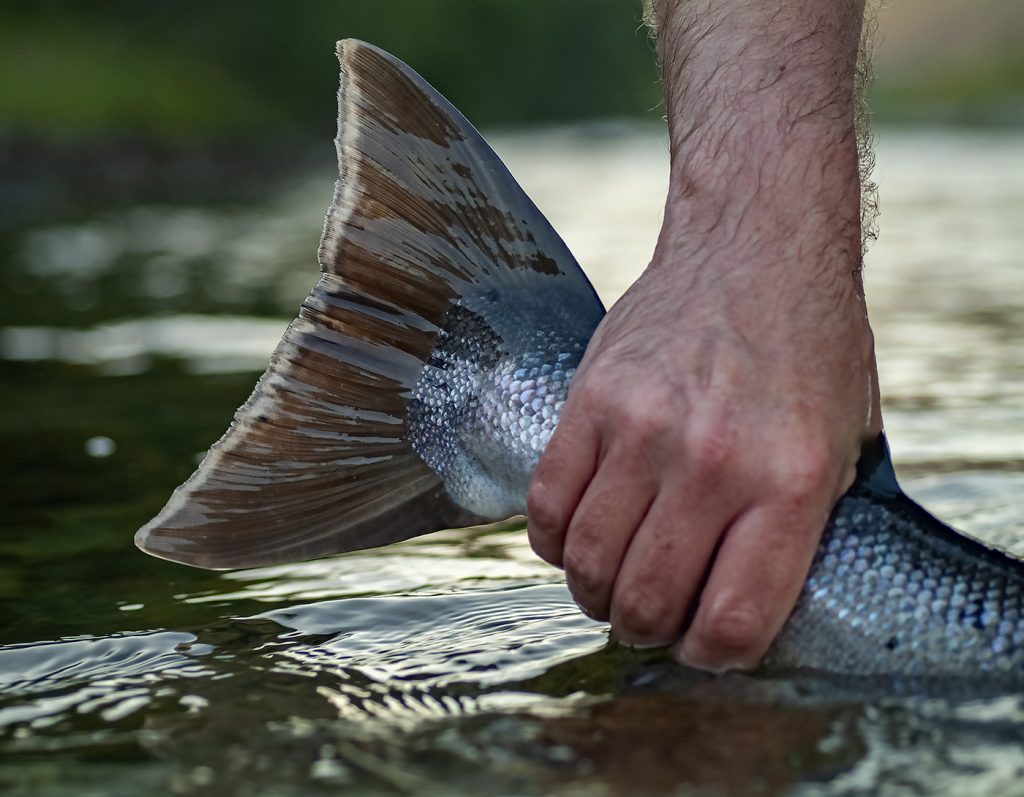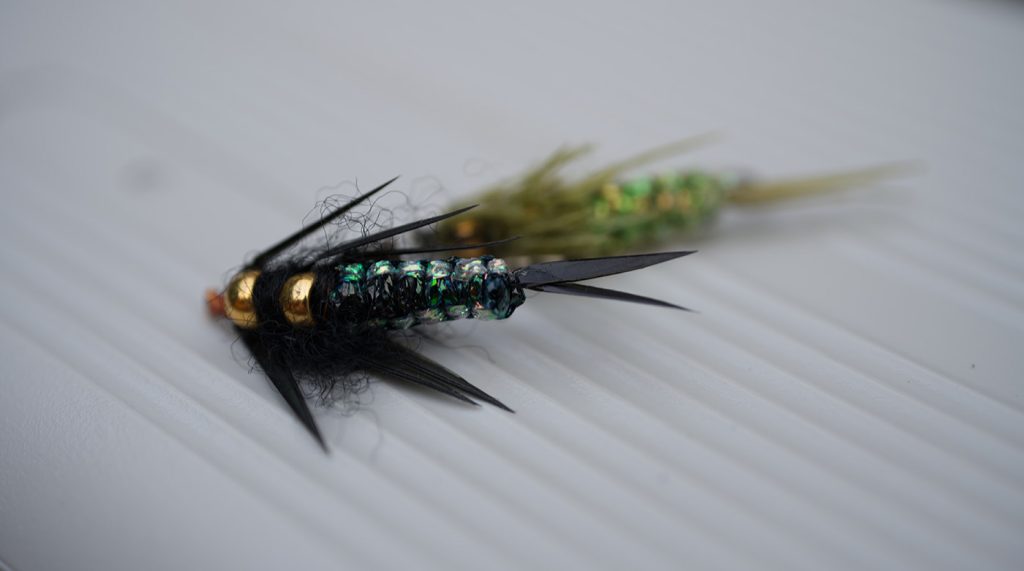
Do salmon eat nymphs? Yes, at least as younglings in the river, before they enter the sea, they do. But I think it’s common knowledge that once they enter the rivers, they stop eating. How they manage to survive for several months and not least why they take our flies is a subject for another blog. However, it’s clear that salmon do take flies that imitate large stoneflies nymphs and even ones fished upstream and dead drifted past their lies.
Some will argue that this is because of some “memory” from their first 2 years in the river, where they feed on the exact same prey as trout and grayling. Others believe it’s because they’re curious enough that the take the fly to examine it, but I won’t dwell anymore on that particular subject. It’s a fact that they do take artificial nymphs. I have a couple of friends who visited the famed salmon rivers on the Kola Peninsula quite a few times around the turn of the millennium. The new and “young” fishery on the Kola Peninsula resulted in the development of new techniques to catch salmon, particularly when conditions weren’t the best. The same is the case, I think, for the excellent sea trout fishing in Tierra del Fuego. Perhaps because someone didn’t know “how to fish for them” traditionally, new methods emerged.

A very big sea run brown trout from Argentina. Photo Henrik Mortensen / Salmologic

These two salmon nymphs from Kola, clearly stone fly imitations, are well chewed up by salmon.
Much to my surprise, my friend Peter returned from Kola one year with a small handful of nymphs that he had been very succesfull with. The guides instructed the fly fishers to cast across, sometimes a little upstream and drift the flies towards lies. It turned out that this method out fished traditional methods in low water conditions and more sun than we like. These are clearly stone fly imitations. Two stout tails, six legs, a flat abdomen and obvious wingcases. They are also big. I refuse to believe that fairly detailed imitations like these originals from a Kola salmon guide are essential, but they worked. I do believe the methods is the important part.
As far as the style of fly and tying technique goes, there’s nothing new under the sun. Legs and tails are biots, the abdomen is made with two different braids. The flat shape and dark dorsal side/bright ventral side is made with the so-called shuttle weave. The weight is two beads, which also forms the thorax, covered with wing cases made with some sort of feather fibres.

I’ve tied an almost similar version, only with wing cases made with FlexiBody.
I have no experience nymphing upstream/cross stream for salmon, but I am sure that a much simpler fly is just as effective. A good example of one is the Girdle Bug or the very similar Pat’s Rubber Legs. And these have rubber legs, so they are definitely more mobile in the water. They are also easy to tie in a weight that suits the rivers you fish. Thin weight wire, tungsten rubber sheets, beads – all are good and suited for the job.

Big Sea Run Brown caught by Henrik Mortensen / Salmologic.

Two different versions of Girdle Bugs/Pat’s Rubber Legs. I will try fishing the black ones for salmon. As always when fishing deep, one fly is never enough as you’ll invariably loose some. With 10 of each, I’m prepared. The small orange/red ones will be just as attractive to a brown trout, even a big grayling.
And as it just happens, we believe we have just the right hook for these flies. The recently introduced HR 416 , which was developed for this style of fly and produced with a wire thick enough to handle potentially big fish. Which of course is why we named it Anadromous Nymph. Despite its name, it’s well suited for lots of other flies as well.

The next time I’m on the salmon river, I will definitely try nymphing. Preparing and writing this blog has been inspiring for me and I’m quite anxious to try it.
